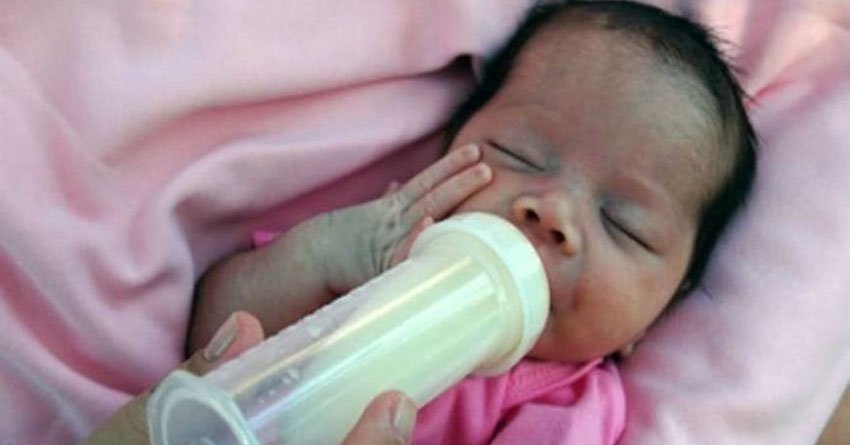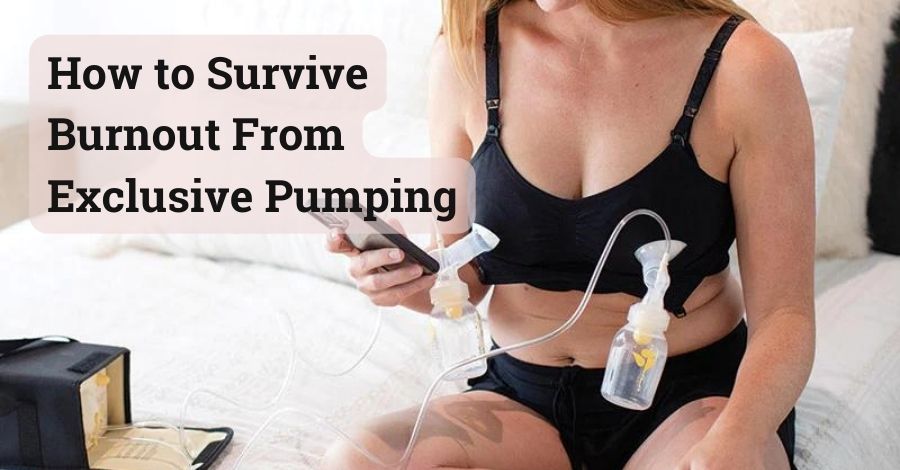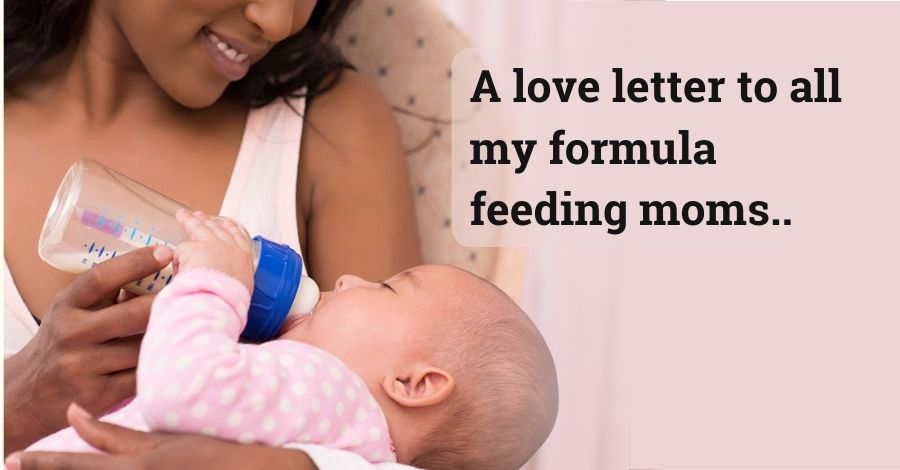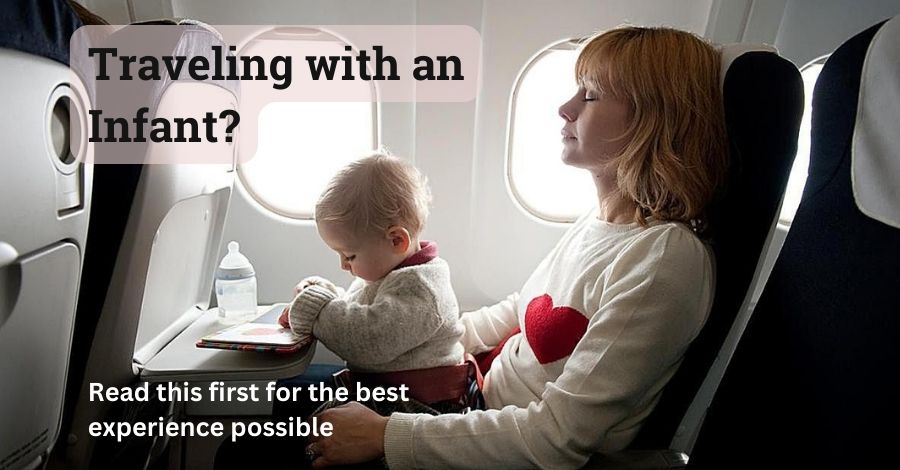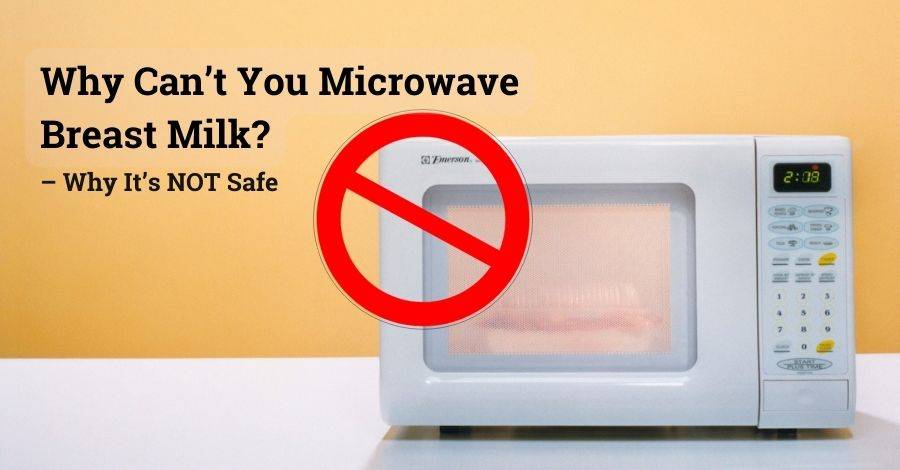
Key Points
- The article advises against microwaving breast milk due to uneven heating and nutrient loss.
- The science shows that proteins and vitamins are destroyed, reducing milk’s health benefits.
- Research indicates significant risks from high temperatures and uneven heating.
- Experts like the FDA and AAP recommend alternative warming methods.
- Safe options include bottle warmers, warm water bowls, and warm faucets.
As busy parents, we’re always looking for ways to make our lives easier with all that’s required to take care of a new baby. And there is absolutely nothing wrong with that! And because of its ease factor, we’ve probably all wondered at one time or another if it’s OK to microwave breast milk. Unfortunately, this isn’t one of the shortcuts that you should take.
Why Can’t You Microwave Breast Milk – two main reasons
1. Microwaves heat food and liquids unevenly, and the hot spots that a microwave can create in your baby’s breast milk risks burning your baby’s mouth and throat.
2. Microwaving will heat your baby’s breast milk past the point of where it will begin to deteriorate or break down its health properties. Because microwaves heat unevenly, even a short bout in the microwave can heat parts of the milk well past this point.
Let’s take a deep dive into why why can’t you microwave breast milk (even when it takes a couple of minutes off your prep time.) Then read on for our suggested warming alternatives that will keep your baby healthy and safe.
What Does Science Say About Microwaving Breast Milk?
Even if you’ve already heard that you aren’t supposed to microwave breast milk, you may wonder if it’s really as big of a deal as everyone makes it out to be. Like, what if you just did it once in a while…is that OK? The truth is that it’s just not worth the risk. And the loss of nutritional benefits counteracts the entire point of giving your baby breast milk in the first place.
Here’s a closer look at why it’s always best to avoid microwaving breast milk.
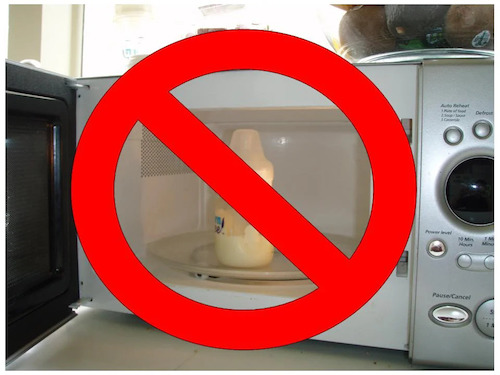
Microwaving Creates Dangerous Hot Spots in Liquids and Food
Microwaves are an everyday convenience that most of us couldn’t live without. What you’ve surely noticed in using one is that after heating for a period of time, part of your food will be burning hot while the other half is still cold. While simply annoying for us, this is actually what makes heating breast milk in the microwave dangerous for your baby.
Because of uneven heating temperatures, microwaves can cause what are called “hot spots” in your baby’s breast milk. You may think you would notice if your baby’s milk was too hot, but you probably wouldn’t. This is because the outside of your baby’s bottle can still be completely cold to the touch with spots inside that are scalding hot.
The FDA writes, “Heating breast milk or infant formula in the microwave is not recommended. Studies have shown that microwaves heat baby’s milk and formula unevenly. This results in ‘hot spots’ that can scald a baby’s mouth and throat. Moreover, the high temperatures can break down the beneficial components in breast milk.”

The risk just isn’t worth the extra minute or two you’ll save from microwaving a bottle. We have solutions coming up about safe ways to warm a bottle instead.
Does Microwaving Really Destroy Proteins and Vitamins?
Yes, microwaving breast milk can destroy essential proteins and vitamins. Breast milk contains vital proteins, enzymes, and antibodies that are crucial for your baby’s development and immune system. When breast milk is heated unevenly or to too high a temperature, these components can deteriorate.
It’s not that you can’t warm breast milk at all—there are completely safe ways to do so—but a microwave will bring the breast milk past the temperature at which breast milk begins to lose the properties that make it your baby’s superfood.
At What Temperature Does Damage to Breast Milk Occur?
One of the critical temperatures to consider is 104 degrees Fahrenheit. Studies show that human milk nutritional and immunological values begin to deteriorate at this temperature. The rate of deterioration increases significantly at 122 degrees Fahrenheit. Since microwaves heat unevenly, parts of the milk can easily reach or exceed these temperatures, even if the overall temperature seems safe.
Though the microwave will surely damage your baby’s breast milk, other methods (such as placing a bottle into a pot of boiling water) will also make the breast milk hot enough for this deterioration to occur.
Why Is Destroying Proteins and Vitamins in Breast Milk Bad?
As living nourishment, breast milk is affected by temperature. Solid scientific evidence shows that breast milk begins to lose its “superpowers” when heated past 104 degrees. Here are the ways that human milk changes and deteriorates as it gets too hot:
- Immunologic and Anti-Inflammatory Components: Components such as SIgA antibodies, lactoferrin protein, and lysozyme (infection protectant) are decreased.
- Beneficial Probiotic Bacteria: These are destroyed.
- White Blood Cells: These are destroyed, in turn decreasing anti-infective properties.
- Fat Content: Vital for infant growth, the fat content decreases.
- Digestive Enzymes: These are inactivated.
As a parent who is working hard to give your baby what is considered to be the “gold standard” for infant nutrition, you can see why it’s so important to take care that you’re not overheating your baby’s breast milk—in the microwave or otherwise.
Is There Research on the Risks?
Yes, several studies and experts have highlighted the risks associated with microwaving breast milk. Research indicates that heating breast milk beyond certain temperatures can significantly reduce its nutritional and immunological quality. These studies reinforce the importance of maintaining the integrity of breast milk by avoiding high temperatures and uneven heating.
A study published in the journal “Pediatrics” found that microwaving human milk—even at a low setting—can result in uneven heating and hot spots, which pose a scalding risk. Additionally, the study noted that microwaving can destroy the protective antibodies and enzymes in breast milk, reducing its health benefits.
The FDA also warns against microwaving breast milk due to these risks, emphasizing that uneven heating can create hot spots and the high temperatures can destroy vital nutrients.
What Do the Experts Say?
The American Academy of Pediatrics (AAP)
The AAP strongly advises against microwaving breast milk. They highlight that microwaving can create hot spots and cause nutrient loss. The AAP recommends using alternative methods to warm breast milk to ensure safety and preserve its beneficial properties.
NHS (National Health Service, UK)
The NHS also advises against microwaving breast milk due to the risk of uneven heating and nutrient loss. They recommend safer methods such as using warm water baths or bottle warmers that ensure even heating without reaching high temperatures that can damage the milk.
Western Australia Department of Health
The Western Australia Department of Health echoes these concerns, advising parents to avoid microwaving breast milk. They emphasize the importance of maintaining the milk’s nutritional and immunological integrity by using gentle warming methods.
FDA (U.S. Food and Drug Administration)
The FDA explicitly states that heating breast milk or infant formula in the microwave is not recommended. Their studies have shown that microwaves heat baby’s milk and formula unevenly, creating hot spots that can scald a baby’s mouth and throat. They also highlight the risk of nutrient loss due to overheating.
Safe Warming Alternatives to a Microwave
Microwaves are clearly not a safe way to warm your baby’s breast milk, and you want to be sure you avoid any practice that will heat the breast milk past 104 degrees. Anything under this temperature is fine, and giving your baby body temperature milk is ideal. Cooler than that or even cold are completely safe options as well if your baby will take it this way.
Luckily, there are plenty of ways to warm your baby’s bottle of breast milk in a safe manner while keeping all its valuable properties intact. Here are the best warming options:

1. With a Bottle Warmer
Bottle warmers offer convenience while making the warming process mess-free. But you still need to take care to choose a bottle warmer that you can be confident won’t overheat your baby’s bottle.
The Baby’s Brew is our go-to bottle warmer for ensuring the perfect temperature for breast milk. Parents can choose from four different temperature settings, including the perfect temp of 98.6 degrees for breast milk. This battery-operated portable bottle warmer lets you warm your baby’s milk anytime, anywhere while knowing you’re giving your baby breast milk with the exact nutritional profile to thrive and stay healthy.
2. In a Bowl of Warm Water
When you’re at home, an easy way to warm a bottle safely is in a bowl of warm water. With this method, you’ll simply fill a bowl with warm water and place the bottle inside until the bottle comes to a lukewarm temperature. What can be tough with this method is knowing that your baby’s breast milk is staying under the 104-degree mark. To avoid making it any warmer, you never want to use hot water in your bowl. This method requires some attention to avoid overheating, but it is a safe and effective way to warm breast milk.
3. Holding it Under a Warm Faucet
Another method for safely warming a bottle of breast milk is by holding it under a faucet of warm running water. Ensure the water isn’t too hot by testing it on your hand. If you can comfortably hold your hand under the running water, it’s safe for warming your baby’s bottle. This method is quick and easy, but like the bowl method, requires attention to avoid overheating.
Important Tips:
- Never heat breast milk to boiling point.
- Always test the temperature before feeding by placing a few drops on your inner wrist. It should feel comfortably warm, not hot.
- Never reheat leftover breast milk. Discard any unused warmed milk.
The Bottom Line
The bottom line is it’s just not worth it to warm your baby’s breast milk in the microwave even just once. If you have access to a microwave, then that means you have access to warm water, and there’s no reason to risk ending up with breast milk that has dangerous hot spots or lost nutrients. A reliable portable bottle warmer where you can choose the exact temperature is your best bet.
References
- The effect of microwave heating on vitamins… – https://pubmed.ncbi.nlm.nih.gov/8889628/
- Are there any studies about effects of microwave ovens on human breast milk? – https://parenting.stackexchange.com/questions/20095/are-there-any-studies-about-effects-of-microwave-ovens-on-human-breast-milk
- Heating Human Milk in the Microwave – https://llli.org/breastfeeding-info/heating-human-milk/
- How to Safely Warm Breast Milk from the Refrigerator and Freezer – https://www.healthline.com/health/parenting/how-to-warm-breast-milk

Hi, I’m Lindley! I’m a stay-at-home-mom sharing all of the tips and tricks I learn throughout my motherhood journey. I’m now navigating through wife life and being a mom while blogging my crazy adventures. I’m so glad to have you along for the ride!
